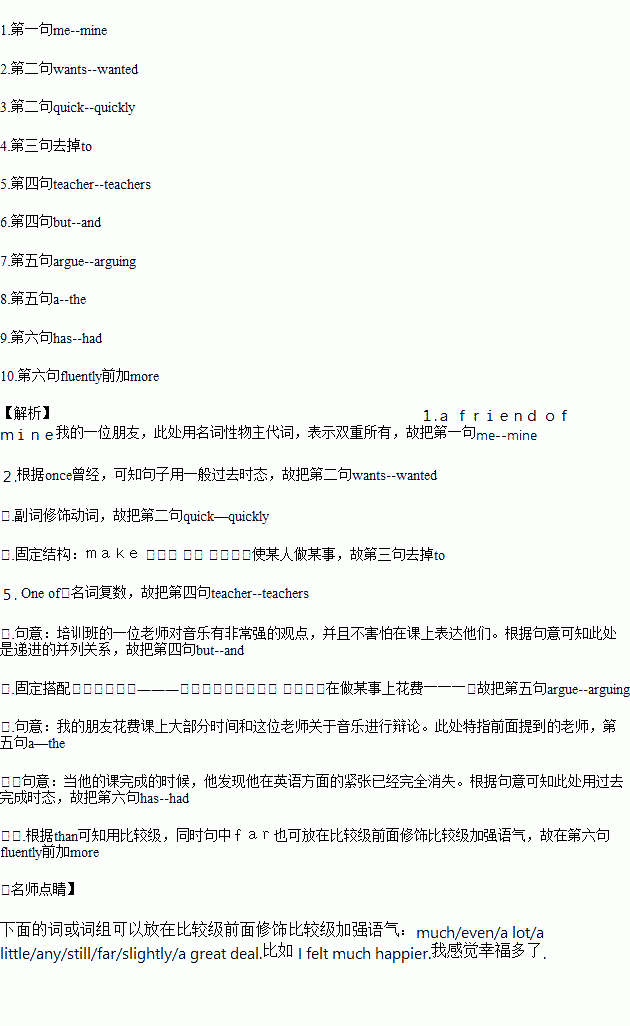题目内容
假定英语课上老师要求同桌之间交换修改作文,请你修改你同桌写的以下作文,文中共有10处错误,每句中最多有两处。错误涉及一个单词的增加、删除或修改。
增加:在缺词处加一个漏字符号(∧),并在其下面写出该加的词。
删除:把多余的词用斜线(\)划掉。
修改:在错的词下划一横线,并在该词下面写出修改后的词。
A musician friend of me once went on an English course during his summer holidays. What he really wants to do was to improve his ability to think and react quick in spoken English. He said speaking a foreign language always made him to feel nervous, even if after three years of study. One of the teacher on the course had very strong views on music, but was not afraid to express them in the lessons. My friend spent most of the class time argue about music with a teacher. When his course finished, he found that his nervousness in English has completely disappeared, and he was speaking far fluently than before.
 世纪百通期末金卷系列答案
世纪百通期末金卷系列答案


 I saw my seven-year-old son, Paul.
I saw my seven-year-old son, Paul.